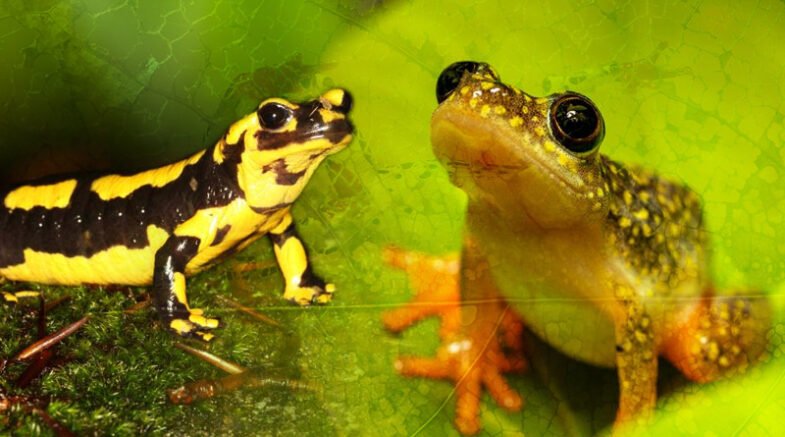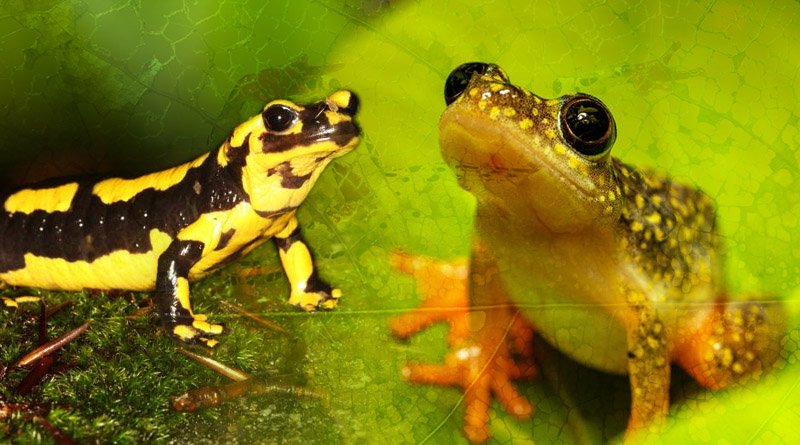Scientists warned on Wednesday that a dangerous, skin-eating fungus has been rapidly destroying African wildlife since the turn of the century.

The highly contagious fungus known as Bd—Batrachochytrium dendrobatidis—kills frogs, toads, salamanders, and other amphibians by attacking the skin and causing heart attacks. It probably existed in amphibian populations for decades before human activity, most likely the wildlife trade, unintentionally spread it throughout the world.
Scientists warned on Wednesday that a dangerous, skin-eating fungus has been rapidly destroying African wildlife since the turn of the century. This discovery shed light on an unrecognised amphibian plague that has caused more species to go extinct or become close to going extinct than any other pathogen and now threatens to wipe out even more across the African continent.
Despite the fact that Bd, which has been dubbed the worst disease ever recorded, has wiped out hundreds of amphibian species worldwide and led to the decline of hundreds more, species found in Africa were once believed to have been immune to the scourge.
Contrarily, new research suggests Bd is already well-established across Africa and has simply gone unnoticed, as reported in a paper published on Wednesday in Frontiers in Conservation Science.
Despite isolated cases of Batrachochytrium dendrobatidis being found as early as the 1930s, the fungal infection only really started to spread across the continent in 2000. A decade later, more than 20% of samples tested positive for the infection, with some regions seeing as many as 74%.
The findings, which the researchers said are consistent with some reports of amphibian extinctions and die-offs, indicate that the fungus has been overlooked rather than absent and indicate a serious threat to Africa’s diverse array of amphibian species, with those in the central, eastern, and western regions of the continent being most at risk.
Bd is the worst pathogen in history in terms of biodiversity because it has caused population declines in more than 500 species and driven hundreds of amphibian species to extinction or close to extinction in regions where the fungus has been more closely monitored.
Amphibians are more important than most people realise, and their extinction could have serious repercussions. First and foremost, since many ecosystems depend on amphibians as keystone species, their extinction would have a negative impact on the environment.
These aftereffects can have a significant impact, such as sharply increasing malaria cases due to a lack of frogs to control mosquito populations. Biodiversity is a major force behind innovation, particularly in the field of medicine, and the more species that are extinct, the less we will be able to learn from them.
For instance, researchers are studying salamanders to learn how to treat severe wounds using their remarkable capacity to regrow tissues, organs, and even limbs. It is unclear why major Bd outbreaks had been reported in other parts of the world for decades before Bd only began to spread in Africa in 2000, much later than on other continents.
Vance Vredenburg, a professor at San Francisco State University and the University of California Museum of Vertebrate Zoology in Berkeley and the study’s lead author, suggested that it could simply be chance.
Increased air travel by people and cargo, which could aid in the fungus’s transportation and spread, “is also a culprit,” according to Vredenburg. According to Vredenburg, climate change may also be a factor, possibly by increasing the susceptibility of amphibians to infection or by creating a more favourable environment for the fungus.
According to Vredenburg, the sudden increase in Batrachochytrium dendrobatidis in 2000 may be a sign that the fungus is already reducing amphibian populations in Africa. Without anyone being aware of it, amphibian extinctions may already be taking place in Africa, said Vredenburg.
Although eradicating the pathogen will be impossible, according to Vredenburg, understanding how and when it spreads could help save amphibian species that are affected. As a result of the fact that it “appears to be moved globally by humans, we have a moral imperative to get involved and try to manage and mitigate whenever possible,” Vredenburg said.
